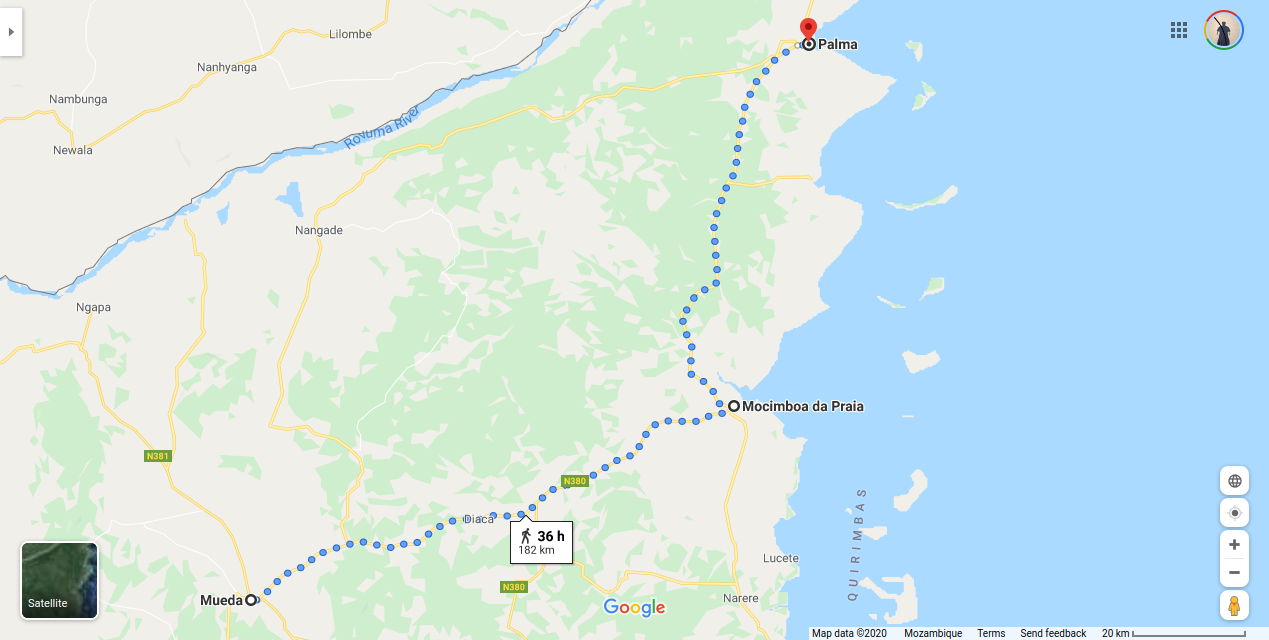The insurgent attack on Mocímboa da Praia, which began on Saturday and continued through Tuesday, has forced a large part of the town’s population to flee, according to sources in the town and in Palma where displaced people have started arriving.
Nito, a stonemason from Mocímboa da Praia, spoke to Zitamar on Tuesday morning from Mangoma, a village some 15km west of his hometown. He was walking with his wife towards the town of Awasse, from where they planned to head to Mueda — a town with the biggest military presence in the area, which has not yet been attacked by the insurgents in Cabo Delgado province.
“I’m with one wife; I don’t know about the other,” he said. “She and her kids had been taken, but they decided to leave her because she’s pregnant. They would have taken the children, but then suddenly a helicopter appeared, the insurgents fled, and she managed to get away. I gave her my last money to get a bus, while I risk it on foot,” Nito said.
In his flight from Mocímboa, Nito passed through the village of Chimbanga, where insurgents had decapitated three people. The military post there had been dismantled, Nito said, allowing the insurgents to commit the atrocity.
Refugees from Mocímboa da Praia arrived on foot in the town of Palma on Tuesday, after walking north for 80km. A source in that town who spoke to the new arrivals said people had fled in the direction of Mueda and Palma, while in Mocímboa da Praia, houses had been burned and many young women and girls had been abducted.
Villages between Mocímboa and Palma, such as Quelimane and Maputo, are also full of refugees, the source in Palma said — who added that no effort to help refugees had been mobilised from Palma, where work is continuing as normal, “both for the government and the [LNG] projects.”
It is unclear who now holds the town of Mocímboa da Praia. Zitamar sources in contact with people on the ground, and a report from news agency Lusa, indicate that insurgents remain in parts of the town, though government troops may have control of the centre.
The insurgents appear to have attacked in greater numbers, and better equipped, than in March when they took control of the town — but the Mozambican military now has air support from helicopter gunships operated by South African security company Dyck Advisory Group (DAG), which were observed firing from the air on suspected insurgents, also risking collateral damage among civilians.
Another indication of renewed efforts on the part of the government to fight the insurgents is the deployment of a senior naval officer, away from guarding the LNG projects in Palma district, to lead the force in Mocímboa da Praia. Commander Horacio Charles was, however, a victim of fighting on Saturday.
Zitamar received reports on Tuesday of government reinforcements moving north towards Mocímboa da Praia from the provincial capital of Pemba, potentially with a view to a counter-offensive to secure the town on Wednesday.
This article was produced by Zitamar and Mediafax under the Cabo Ligado project, in collaboration with ACLED and with support from Crisis Group. The contents of the article are the sole responsibility of Zitamar News.









